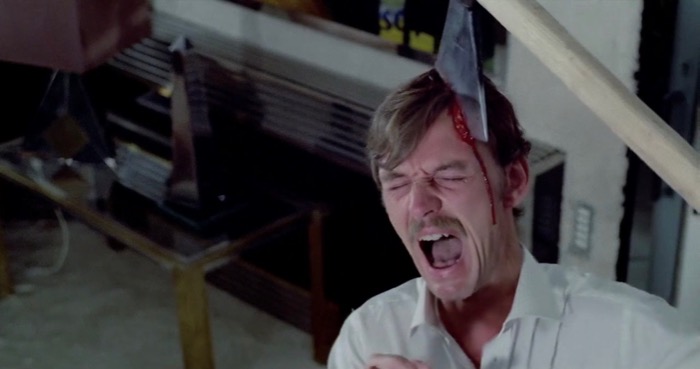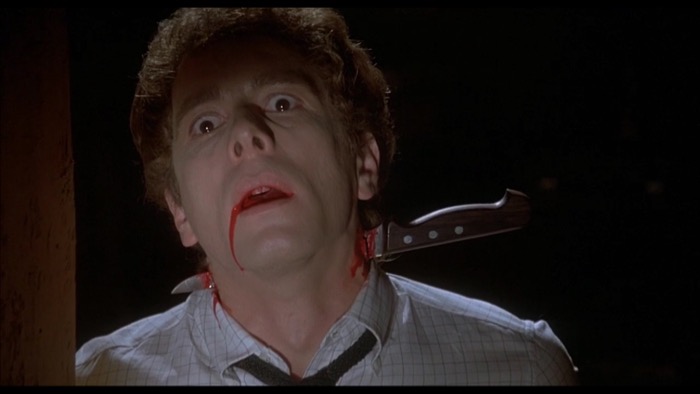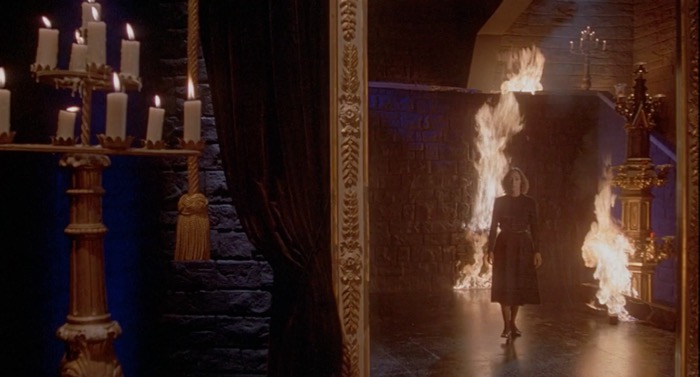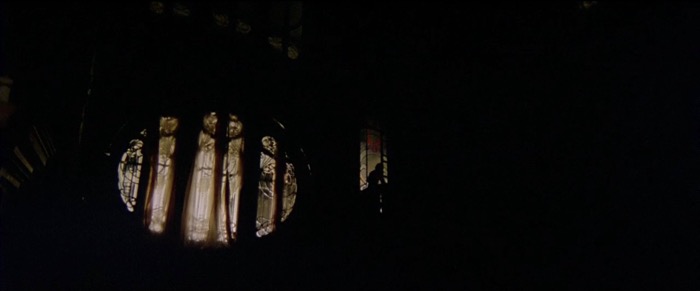
As I wrap up my #31DaysOfHorror, I’m getting to some interesting things indeed. I’m a big fan of Dario Argento, but it’s really just been for Phenomena and Suspiria, two incredibly beautiful Italian horror movies. I discovered Suspiria in high school and it changed my life, the way a handful of horror movies have. However, up until this month, those were the only Argento movies I’d seen. That felt shameful (rightfully so), and so this month I’ve really been taking the opportunity to step up my Argento game. Earlier this month, I caught up on my old Dario Argento gialli, with The Bird with the Crystal Plumage, Cat o’ Nine Tails, and Four Flies on Grey Velvet.
Today, I’ll talk about three more of his movies that I watched this month: Profondo Rosso, Inferno, and Tenebre. I’ve now seen everything he directed up through 1985, but I’m leaving a few unwatched at this point; word on the street is that there are a few more good ones, and then a great big pile of schlock. Anyway, the three I watched were all pretty good. Let’s go from newest to oldest (which also happens to be least to best).
Tenebre (1982)
Although I referred to this movie one sentence ago as the “least” of the three, that doesn’t mean this wasn’t a good movie. It’s a gripping story, full of murders, twists, and turns; the blood flows tempera-red and plentiful. An American horror author, Peter Neal, comes to Rome, which has been racked with a few murders. The murderer’s most recent victim was found with pages from the author’s most recent novel stuffed into her mouth. The murderer himself calls Neal and threatens him.
Argento had this to say about the basis for the movie:
[S]omebody called me… to talk about Suspiria… [and] called again the next day to ask if he could meet me. He confessed that Suspiria had made a very strong impression on him, like a jolt of electricity, and he wanted to ask me if making the film had given me the same sensations. That put me on my guard. Day after day he called me to confide more and more horrible things and, at the end of the fifteenth call, he told me that he wanted to kill me. He was insane… He swore he would have my skin.

This movie is incredibly deliberate in its construction and progression. Every character serves multiple purposes; each societal role is fulfilled by more than one character, and each character fulfills at least two societal roles.
Ideally, I’d have time to watch this again and do a more thorough deconstruction (and maybe at some point I will), but it’s already the 30th, and I have two more movies to watch, and two more movies to discuss in this blog post.
Here’s an image of a dude getting an axe to the skull.

I didn’t include any animated gifs for Tenebre because I wanted to maintain at least some semblance of brevity while still discussing three films, but there are a number of choices, had I gone that route; there are a number of incredibly shocking and beautiful death scenes, and a single two-and-a-half-minute uncut crane shot that circles and swoops around the outside of a house. A two-and-a-half-minute animated gif would break the internets, so I’ll just put a YouTube link here.
Four out of five stars.
Inferno (1980)
Of the three, this is the movie that I was the most looking forward to watching. The direct follow-up to Suspiria, this is the second movie in Argento’s proposed “Three Mothers” trilogy (the last movie, The Third Mother, came out more than a quarter-century later, in ’07, and I have not seen it). Additionally, it’s one of only two of Argento’s pre-1990 ventures into supernatural horror (the other being Suspiria), although I’d make an argument for Phenomena as well.
The world of the three mothers has its own, Argento-built mythology, which is itself based on a tiny scrap of feverish, opium-addled writing by Thomas De Quincey. There are three mothers– Maters Lachrymarum (tears), Suspiriorum (sighs), and Tenebrarum (darkness). Each of them has a horrible, evil house in which they dwell, and from whence they spread suffering and sadness. In Suspiria, the antagonist was Mater Suspiriorum; in Inferno, it’s Mater Tenebrarum, who occupies a massive, odd apartment building in New York City.
Rose, a poetess, finds a book about the three mothers, and pieces together that she is living in one of the mothers’ houses; that screenshot at the top of this blog entry is from her initial discovery. She writers a letter to her cousin Mark in Rome, asking him for help. He tries to read it in his music class, but is distracted by this daffy broad staring at him:

Mark leaves the letter behind and bails. The letter is found by a friend of his, Sara; she reads the letter, is alarmed, and tries to express this to Mark. Eventually, he makes his way to New York, to aid Rose.
By the time he makes it there, a whole lot of people are already dead, caught in various nightmarish scenarios.

Once in the building, he befriends another resident, and the owner of the pawn shop next door, but his path is already beset and plagued by Mater Tenebrarum. The rest of the movie plays out beautifully. While it lacks the supersaturated color of Suspiria, the set pieces retain their creepy beauty, and the fairy-tale, dreamlike logic of the film follows its predecessor masterfully. All of this was helped by the fact that Argento had Mario Bava on hand to handle a fair amount of the special effects and matte work. Two masters at their craft, creating a gorgeous nightmare.

Four and a half out of five stars.
Profondo Rosso (1975)
This is the one of the three that I was most curious about. It had always been held up as one of his masterpieces; my friend Jay maintains that it’s his favorite, even over Suspiria, which made me question his taste altogether. Alternately, I had hoped that he’d be right. Although I’ve thoroughly enjoyed all of the other Argento movies I’ve seen, nothing comes close to Suspiria. Well, after watching it, I can understand Jay’s point completely. The movie is beautiful, it’s really well acted, the sets are outstanding, and the plotting is tight.
Nothing can touch Suspiria, but this comes the closest of all the Argento movies I’ve seen.
The movie’s about an Marcus, an English piano teacher in Turin. While walking home, he can see her from the street, banging on the window and screaming for help. As he watches, unable to provide assistance, her attacker forces her halfway through the window, where she lands neck-first on the jagged broken pane. Marcus rushes up to provide assistance, but it’s… too late.

Haunted by the murder, and certain that he holds the key to the identity of the murder in his memories of rushing up to the apartment, Marcus begins to investigate alongside the police. A number of people meet their ends in various beautifully horrifying ways: a woman is scalded to death in a hot bath. A man has his face– his teeth, really– bashed into various pieces of furniture until he’s senseless, at which point he’s given the coup de grace.
These death scenes are pretty rough, man.
The movie uses a number of interstitial flashbacks and dreamlike sequences to masterful effect– there was an inciting incident years in the past, involving a small child who may or may not have grown up to become the murderer, and a number of low-and-slow pans over childrens’ toys and other objects.

Eventually, through convoluted research methods, Marcus tracks the killer to an old abandoned villa, and tracks a killer– and is tracked in turn– through a darkened and beautiful shambles.

Eventually, things boil to a head.

This movie is fucking great.
Five out of five stars.
